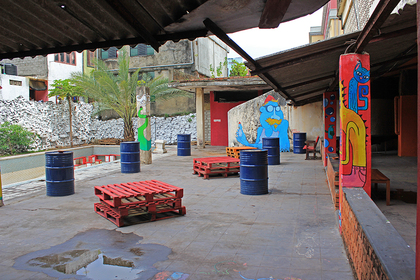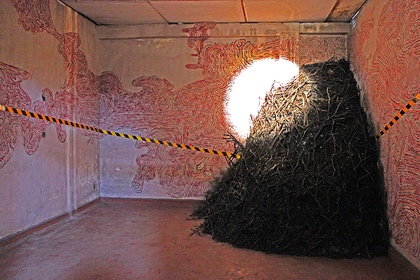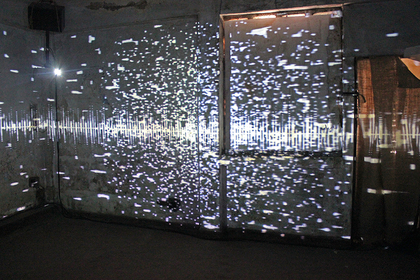
R
E
V N
E
X
T
Bias is a curious thing. One is almost always aware of it when writing about art. Yet one is rarely conscious of it when viewing artworks. Like many in the peripatetic art world, I have become increasingly skeptical of the large-scale-exhibition-with-a-lofty-title format—which often over-promises and under-delivers. As one of Sri Lanka’s main arts festivals (the other being the Colombo Art Biennale), the third edition of Cinnamon Colomboscope has thankfully managed to avoid many of the pitfalls that can be expected of such major exhibitions and mini-biennales. Spread over seven floors at the politically poignant site of the Rio Hotel and Cinema complex in Colombo—which opened to glory in 1965 as the city’s first 70mm cinema, but was tragically burned, looted and abandoned after the Black July Riots of 1983—Colomboscope showcases a thoughtful mix of global, regional and local artists. The curators, Natasha Ginwala and Menika van der Poorten, collaborated effectively to apply their international experience and local knowledge in sensitively reinvigorating the site. While the Rio’s scarred physicality serves as a permanent reminder of a troubled past, it does not dominate the works displayed in the festival. Additionally, the participating artists have also avoided responding to the exhibition’s theme, “Shadow Scenes,” in ways that are too literal or fixed. Rather, as visitors walk through the layered building complex—and into their “hotel rooms”—they see that each of the exhibited works and ideas are given an individual space in which to remain intimate and discrete, but also converse with one other in a fluid manner. Ginwala and Van der Poorten provide a platform from which to see what can happen when a variety of artists, from Jaffna and Colombo to Berlin and Mumbai, are given a chance to respond to a historically loaded context and draw from it a new set of relations.









